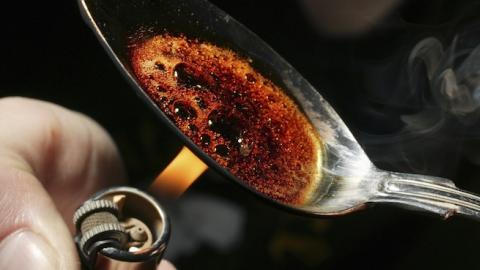News today from the Centers for Disease Control (CDC) confirms the even greater opiate mortality toll than that which has already catapulted the drug overdose crisis into the headlines.
We noted in previous publications (here, and here that in 2013, there were an unprecedented 46,471 deaths from drug overdoses in the U.S. Of these, 24,492 (53 percent) were attributed to opiates
Misuse of prescription opiate medicines at that time accounted for 16,235 deaths, but that figure had been holding steady since 2010. Heroin, by contrast, had quadrupled as a cause of drug-induced deaths since 2007, rising from 2,402 in 2007 to 8,257 in 2013.
Further, we predicted that far worse consequences were in store. In the year since the 2013 overdoses, American past month heroin use has increased sharply, from 289,000 current users in 2013 to 435,000 in 2014, according to national surveys, an increase of 51 percent.
Today, we see the first confirmation of our predictions, in the sharp increases in overdose deaths since that date, as just released by the CDC. As we anticipated, beyond the 2013 data, there is a single-year 28 percent further increase in heroin deaths, rising to 10,574. The rise since 2007, a representative figure from the Bush Administration when there were 2,402 deaths, is 340 percent.
Moreover, after holding steady at around 16,000 deaths per year since 2010, the CDC also shows that opiate prescription overdose deaths have increased sharply in 2014, rising a further 16 percent, to now stand at 18,893.
There is also the problem with how the Obama Administration’s policy response has been focused. Overwhelmingly, they have directed efforts against prescription medical practice, while they have steadfastly neglected the surging source of heroin, today purer and cheaper than ever. That source, as we have documented, is Mexico.
What is the relationship between these new deaths and Mexican heroin? In a single year, between 2013 when the estimated amount of pure heroin coming from the single largest supplier to the U.S. market was set at 26 metric tons, the production out of Mexico for 2014 has risen a stunning 62 percent, with an estimated 42 metric tons of potential pure heroin heading for the U.S. market. It is spread through the growing network of Mexican cartel-allied gangs now dominating U.S. streets. (The figures for 2015 are not yet available.)
The sharp rise in heroin consequences we have already experienced was driven by Mexican production from the years prior to 2014, which just saw the 62 percent increase. Given that increase in supply (total American consumption of heroin has in the past been estimated at around 18 metric tons), we knew that there would be a greater number of overdose deaths looming.
Further, the major driver of the prescription deaths increase has been synthetic opioids such as fentanyl, accounting for 5,544 new deaths. As a Forbes news story points out, the Administration is lumping fentanyl-related deaths in with misuse of prescription medicines, when in reality much of the fentanyl is an illegally-produced drug that is often used by traffickers to “spike” illicit heroin.
As such, treating the fentanyl deaths as a problem of physician prescribing practices can be misleading. Yet the White House persists in its denial of the underlying threat, which is the supply of illegal drugs. Instead of an effective supply-reduction response, their policy relies on changing prescribing practices and promoting the overdose antidote, Naloxone.
But reviving a drug overdose victim in the absence of a comprehensive strategy to reduce illicit opiate availability is little more than temporizing. Too many users return to the needle and fall victim to yet another overdose episode.
Unless the continued use (and rapid spread) of illicit opiates is reversed, simply reviving an overdose victim will not provide a meaningful solution to the crisis.
The magnitude of the drug policy failure evident in these numbers can be seen against the backdrop of the Administration’s proclaimed objectives. The President’s National Drug Control Strategy in 2010 first proclaimed the major policy goals of the Obama approach to the drug problem and the goals were to be met by 2015. A central goal focused on overdose deaths, with a promise to "reduce drug-induced deaths by 15 percent.”
A 340 percent increase in heroin deaths since 2007 is an undeniable signal that the policies adopted by the Obama Administration, with but a single year to reach their target, are failing.
In response, the White House has announced an urgent effort to intervene in this epidemic. According to their announcement today, they will conduct a series of “community forums focused on best practices and evidence-based initiatives” that will “serve as an opportunity to continue the conversation that President Obama began in West Virginia in October.”
The insufficiency of this response eludes no one, beyond the drug policy officials of the Obama White House.















